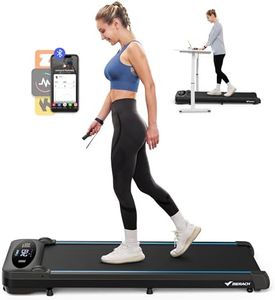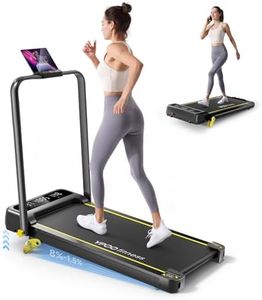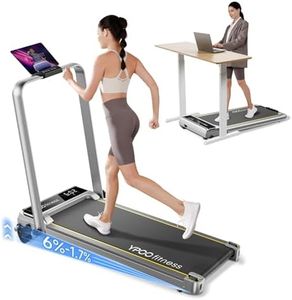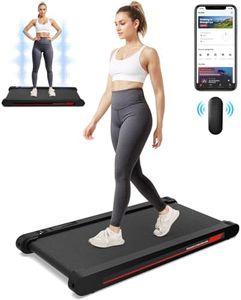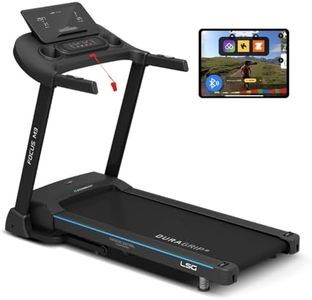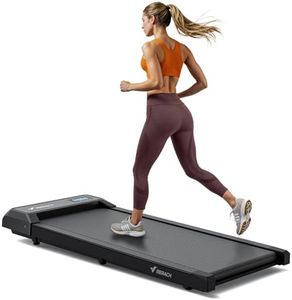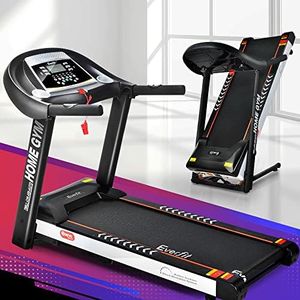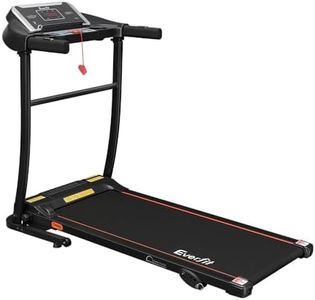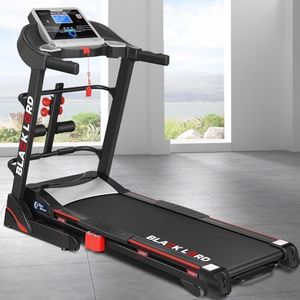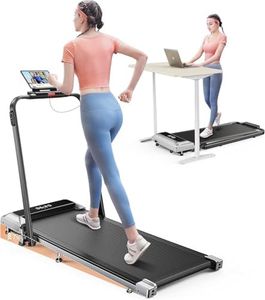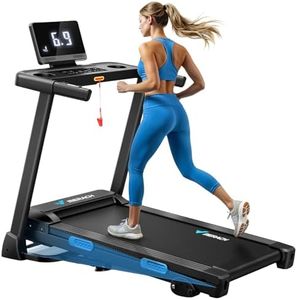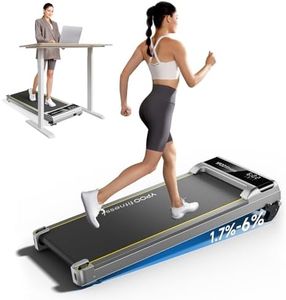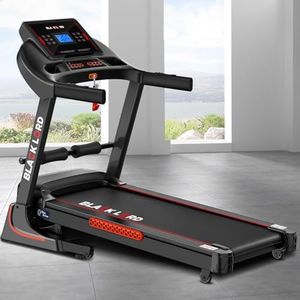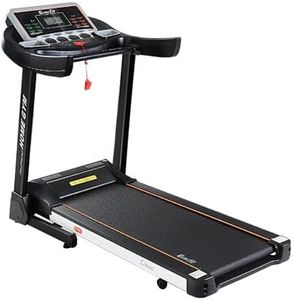We Use CookiesWe use cookies to enhance the security, performance,
functionality and for analytical and promotional activities. By continuing to browse this site you
are agreeing to our privacy policy
10 Best Decline Treadmills
From leading brands and best sellers available on the web.Buying Guide for the Best Decline Treadmills
Choosing a decline treadmill is a great idea if you want to enhance your workouts by simulating downhill running or walking, which can help with muscle balance and training variety. To find a treadmill that suits your needs, it's important to consider the key specifications and features, and match them with your fitness goals, available space, and intended frequency of use. Understanding what each main specification means, how it affects your experience, and how it relates to your personal needs will help you make an informed decision.Decline RangeThe decline range refers to how much the treadmill deck can tilt downward, measured in negative degrees or percentage. This is important because a broader decline range gives you more versatility to mimic real-life downhill terrain, which challenges your muscles differently and can help improve your running form. Treadmills usually offer a decline between -1% and -6%. Lower decline settings are good for gentle downhill walks or recovery, while steeper declines are better for athletes or those looking to intensify their workouts. Choose a decline range based on how much downhill training you want; casual exercisers may find minimal decline sufficient, while serious runners or hikers might prioritize a steeper range.
Incline RangeIn addition to decline, treadmills typically offer incline settings, allowing the deck to tilt upward. This spec is important because it enables uphill simulations for more challenging workouts and a wider training variety. Incline settings often span from flat (0%) up to 10%, 15%, or even 20%. Lower maximum inclines offer gentle elevation for everyday fitness, while higher settings are ideal for intensive hill workouts. Match the incline range to your training preferences: if you like varied, challenging routines, look for a broader range.
Motor PowerMotor power is measured in continuous horsepower (CHP) and reflects how strong and smooth the treadmill runs, especially when supporting declines and inclines. This is crucial because a stronger motor ensures the treadmill can maintain consistent speed and performance when adjusting deck angles. Treadmills may have motors from about 2.0 CHP to 4.0 CHP or more. Lighter use such as walking or light jogging can suffice with lower-powered motors, but frequent runners or users planning heavy downhill or interval workouts should look for higher motor power for durability and smoother operation.
Cushioning SystemCushioning refers to how much shock absorption the treadmill deck provides. It's especially important during decline running, as your joints and muscles experience different forces compared to flat or incline running. Good cushioning helps reduce impact and protect your legs. Systems vary from basic foam to advanced adjustable cushioning. If joint health or injury prevention is a priority, choose a treadmill with a more advanced or softer cushioning system.
Deck Size and Running SurfaceDeck size, or the dimensions of the running belt, determines the available space for walking or running. Wider and longer decks (often 20” x 55” or larger) offer greater comfort, especially during downhill running when stride length may increase. Compact decks are suitable for walkers or people with limited space, while longer and wider surfaces are better for taller users or those intending to run at higher speeds or with a decline. Consider your stride and comfort needs when evaluating deck size.
Console FeaturesConsole features include the display, workout programs, connectivity, and controls for incline/decline adjustment. This matters because easy-to-use controls and clear displays enhance your workout experience, especially when quickly changing deck angles. Some treadmills offer preset decline workouts, entertainment options, and progress tracking. Choose a console that matches your tech preferences and supports the type of routines you enjoy.
Weight CapacityWeight capacity indicates the maximum user weight the treadmill can safely hold, affecting durability and performance. This is especially relevant since running or walking downhill puts unique strain on the frame. Treadmills with higher weight ratings are generally sturdier and more durable. If you’re close to or above the average weight capacity (typically 250 to 350 lbs), opt for a model with a higher limit to ensure safety and longevity.
